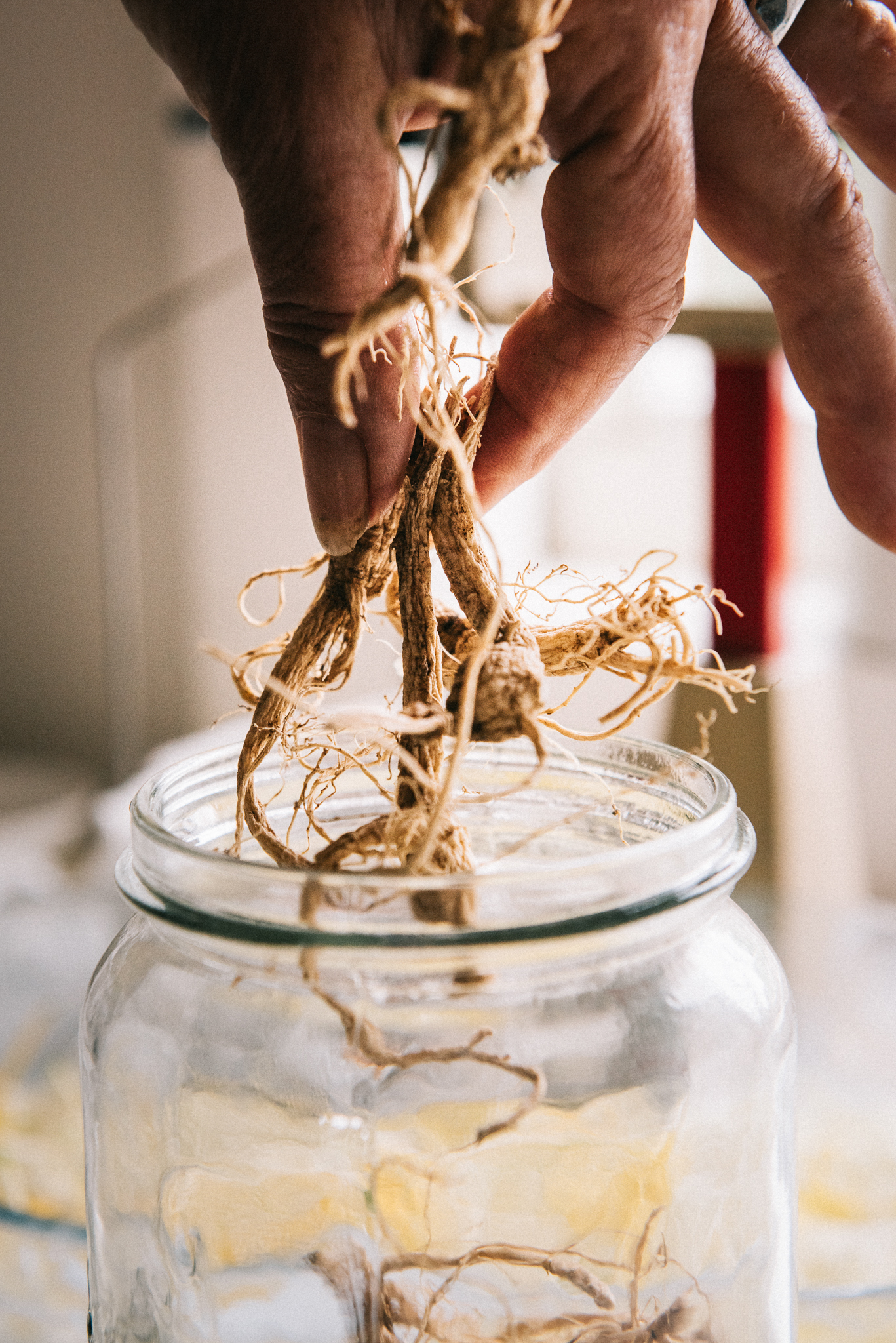We often start off workshops and individual distillations by tasting the botanicals we’re using. Why? Because tasting a botanical—properly tasting, sensing and processing that information can tell you so much about the plant you’re working with—which in turn can help you decide how to distil and use it. Understanding the dominant and secondary flavours, and how they develop helps with blending. Understanding texture—whether it’s soft and giving, or waxy and hard to break down—can help you choose the right techniques.
Often we’ve become familiar with botanicals in recipes, and we know their signature flavour, or calling card—we could even pick them out in the mix, but that’s far from the whole story. For example, you may know about the flavour nutmeg infuses into custard, but your experience of it is mixed with the custard’s velvety-cream sweetness. What does nutmeg taste like on it’s own? Its dominant and secondary flavours, its texture?
Take a piece around half the size of your little fingernail. Place it between the incisors and bite down. Be aware of what’s happening in your mouth: the texture, first sensations, the initial flavours on the tip of your tongue and in the front of your mouth. Taste buds are particularly concentrated here, and around the edges of your tongue, but there are also some on the roof of your mouth, and the back of your throat. Notice how these first impressions change when you move the botanical to the back of your mouth and chew. Let your saliva start to break it down.
Our mouth detects bitter, sour, sweet, salty and umami—try to now define which of these are predominant, or can you recognise a change from one to another?
Now open your mouth and breathe out.
Bearing in mind that our mouth only detects these five main flavours, when we ‘taste’ something to a large degree we’re really using aroma molecules, and employing our olfactory sense. And these aroma profiles are so much more varied. For example this is when you are able to sense the rose note in pink peppercorns, or the lemon in coriander. And this is how you make pairings and get ideas for blends.
To look at it through the lens of distillation—your nose is a bit like the condenser, saliva is the solvent, and your mouth like the pot of the still. The heat of your mouth is the furnace releasing the volatiles, when inhaled through your nose they go directly to your brain, where it goes into overdrive processing, then sending signals to your body about how to react to it.
Just a bit of everyday magic.
If you’d like to explore the aromatic profiles of more botanicals, visit our Encyclopedia Botanica.
—by Jess Culpan



